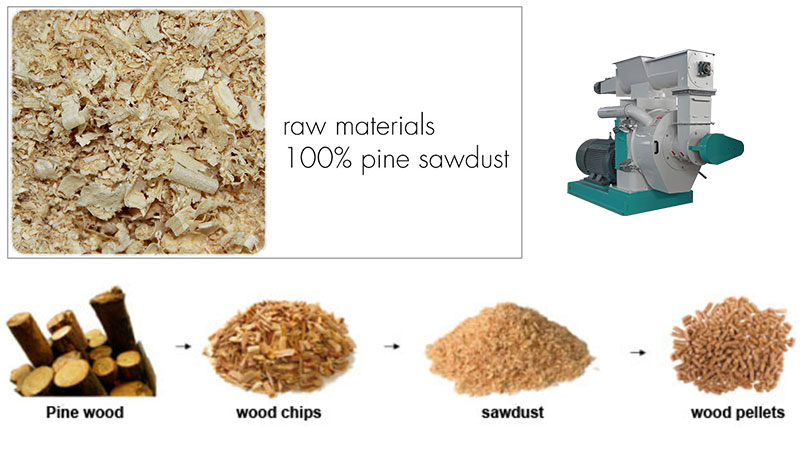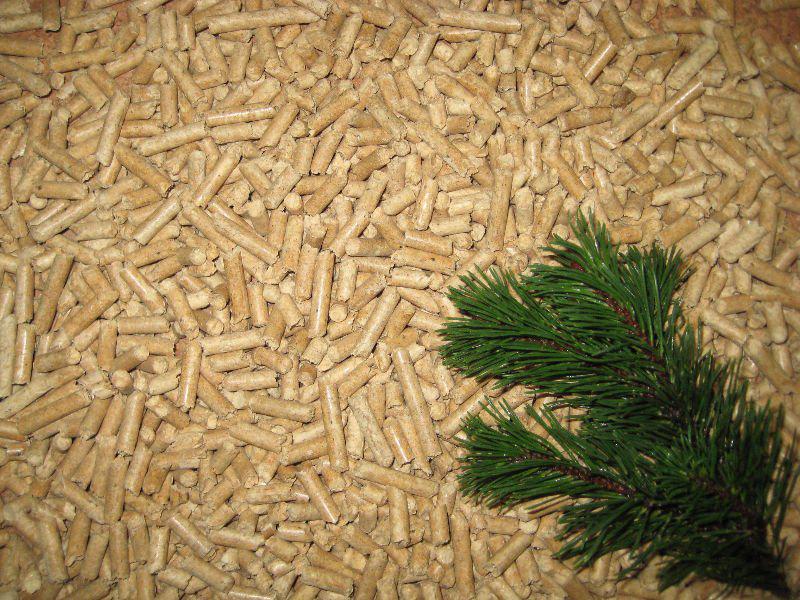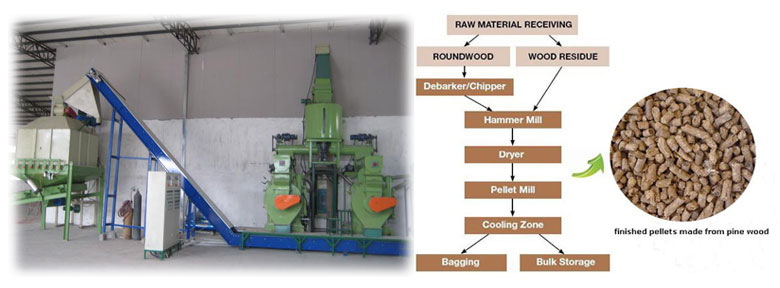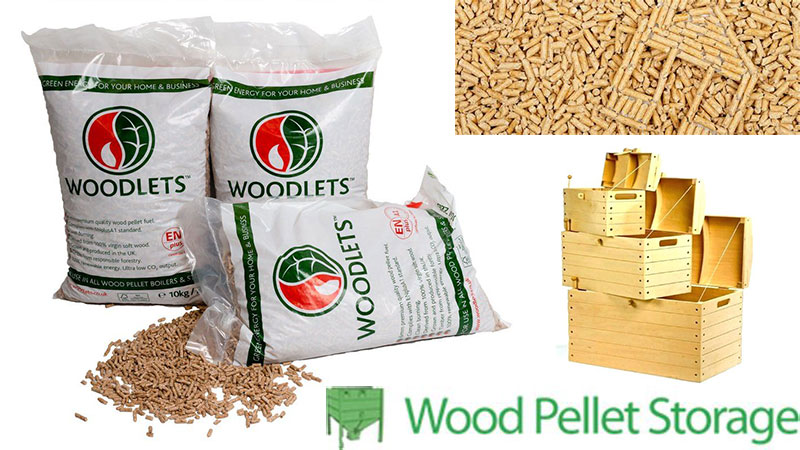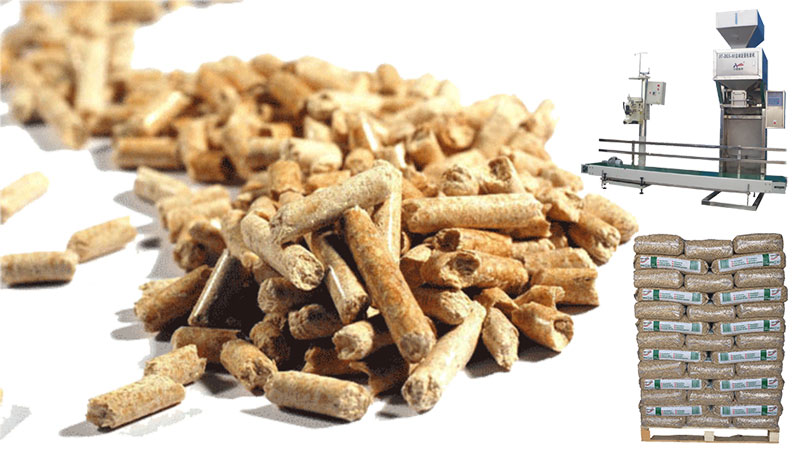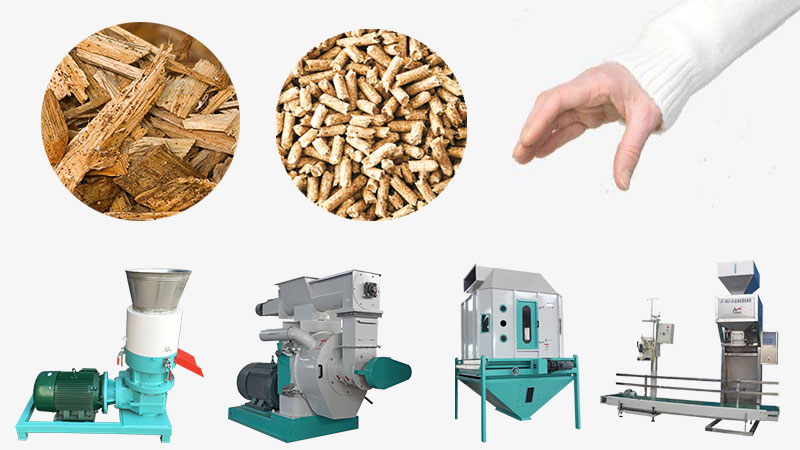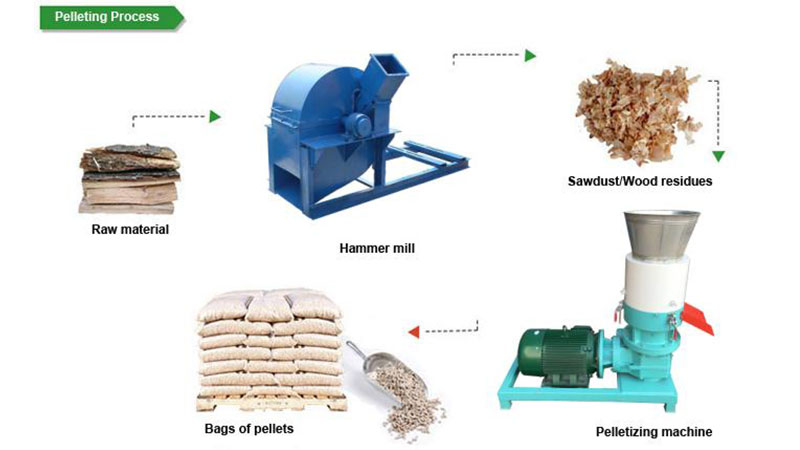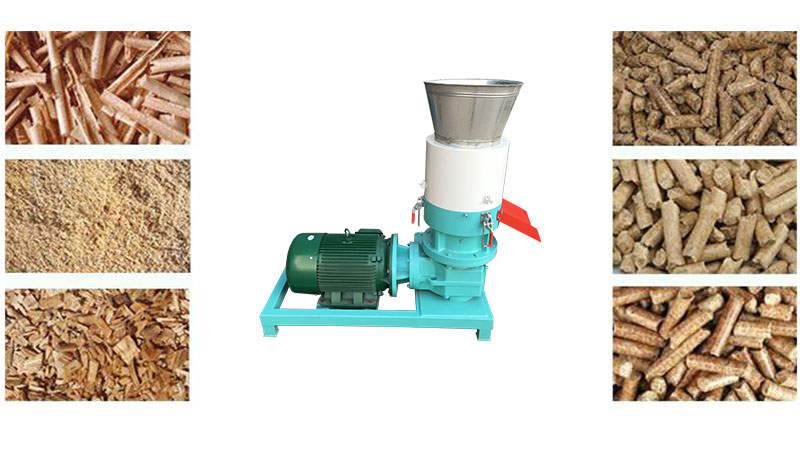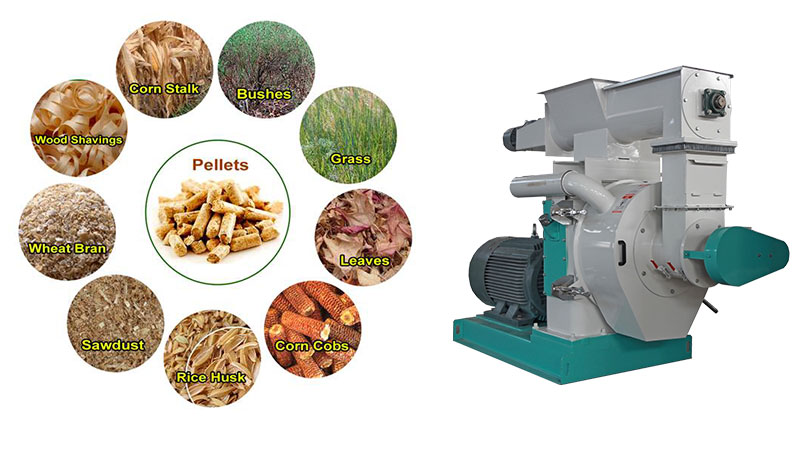 |
Solution for Making Pine Sawdust into Wood Pellets |
1.Introduction
2.Merits of pine residue as fuel
3. Pine pellet prior to pine sawdust
4. Pine pellets manufacturing
1.Introduction
Pines are evergreen, coniferous resinous trees (or rarely shrubs), growing 3-80m tall with long, needle-shaped leaves and typically reaching ages of 100-1,000 years or even more. And certain species of pines yield timber, turpentine, tar, pitch etc.
In terms of distribution of pines, most regions of the northern hemisphere host some native species of pines. Various species then have been introduced to temperate and subtropical regions of both hemispheres, where they are grown as timber or cultivated as ornamental plants in parks and gardens.
As for the residues produced by pine, economic disposal of pine sawdust and shavings has been an ever-growing concern to the wood industries. Enormous quantities of pine sawdust are produced annually by sawmills. A typical green weight of 52 pounds per cubic foot for pinewood can bring about a weight of 1,085 pounds for pine sawdust. A weight of 36 pounds per cubic foot for pinewood dried to 12% moisture content can bring a weight of 750 pounds for pine sawdust. Besides, planing and machining of pine trees will lead to more residues. A planer mill produces about 600 pounds of dry residue per thousand board feet. Thus, the total amount of air-dry sawdust in U.S. industries alone exceeds 15 million tons a year—enough to make a triangular cross section pile 50 feet high, 100 feet wide and over 150 miles long. Then, how to deal with these large numbers of residues produced by pine?
With the urgent need for energy consumption, the bioenergy system is increasingly expected to proceed at a faster pace along with lower investment level. Hence, bioenergy has become the second largest commercial renewable energy source nowadays. Thanks to the low cost and high reliability, biomass fuels are gaining more and more attention and biomass residue pellets are rapidly developed and frequently applied for heating purposes. Thereby, these clean and dry pine residue can be converting pellets as an alternatively ideal fuel for combustion and they can be applied in fireplaces, pellet stoves, boilers for wood pellets and so on.
2.Merits of pine residue as fuel
Utilization of wood and crop residues as an energy source will serve to reduce consumption of fossil fuels, thereby reducing the emission of greenhouse gases to the environment. Why do more and more people take ever-increasing interests in using pine sawdust as an alternative fuel in some industrial countries? Then, the following part is going to present some comprehensive comparisons between some biomass residues of forest wastes (pine, fir, beech etc.) and those of agricultural residues (cotton, cardoon etc.) and give you a satisfying answer.
Table1: analysis of forest biomass residues
|
Parameters
|
Units
|
Pine
|
Fir+pine(50+50%)
|
Poplar
|
Beech
|
|
Bulk density
|
kg/m3
|
654
|
652
|
626
|
635
|
|
Moisture content
|
%
|
24.59
|
22.9
|
24.18
|
15.83
|
|
Ash content
|
%
|
0.68
|
0.73
|
0.81
|
0.85
|
|
Gross calorific value (GCV)
|
kj/g
|
14.589
|
15.684
|
14.832
|
16.202
|
|
Net calorific value (NCV)
|
kj/g
|
20.082
|
20.042
|
19.371
|
19.225
|
In the above table 1, these parameters of forest (poplar, pine, fir, beech) are carefully analyzed. From the results, it can be said that the heating values of pine and mixture of pine with fir grinds are slightly higher than that of poplar and beech grinds. Pine grind has the highest NCV of 20.082 kj/g. Bulk density of forest residue grind is significant. Poplar and pine grinds determine 24.18% and 24.59% moisture, respectively. Low ash content is also crucial to the combustion process, just as very strict ash deposition limits in some countries have been adopted.
Table2: analysis of pellets from agricultural crop, forage and forest residues
|
Pellets
|
Diameter(mm)
|
Length(mm)
|
Net calorific value(kj/g)
|
Ash content(%)
|
|
Cotton
|
6.20
|
21.75
|
16.988
|
3.49
|
|
Cardoon
|
6.20
|
21.76
|
14.590
|
8.33
|
|
Phragnites australis
|
6.20
|
21.76
|
16.471
|
7.46
|
|
Typha angustifolia
|
6.20
|
21.75
|
16.584
|
6.78
|
|
Poplar
|
6.20
|
21.75
|
17.814
|
0.79
|
|
Beech
|
6.20
|
21.75
|
18.050
|
0.77
|
|
Pine
|
6.20
|
21.75
|
18.754
|
0.64
|
|
Fir+pine(50%+50%)
|
6.20
|
21.75
|
18.367
|
0.71
|
In the above table 2, eight different types of pellets are presented. The first four pellets are made from agricultural crop and forage grids. The other four are made from forest (wood) residues. All these pellets have the recommended diameter. It can be seen that all pellets from forest residues have a similarly higher calorific values and lower ash content. Pellets from agricultural crop and forage residues show lower calorific values and a higher ash content.
Given both analysis on the calorific energy values of biomass residue pellets for heating purposes, some main conclusions that can be drawn from the presented study are listed below:
• Forest residue grinds in comparison with crop and forage grinds demonstrate significantly higher bulk density and significantly lower values of ash deposition.
• Pellets from forest residues show higher calorific values and lower ash content in comparison with pellets from agricultural crop and forage residues.
•Pine and mixture of Pine with Fir grind produced slightly higher net calorific values than that of Poplar and Beech grinds.
Therefore, it has been verified that pine residues possess an overwhelming priority for combustion over other forest wastes and agricultural residues.
3. Pine pellet prior to pine sawdust
With the rapid development of new technologies, wood pellet mills are available to turn wood and crop residues into standard pellets that are environmentally safe and easy to handle. Pine sawdust as wood residue is also processed into pellets. There are many advantages that pine converting into pellets:
a)Excellent handling
The pellet is free flowing, which facilitates material handling and rate of flow control.
b) High density
The energy density is increased, easing storage and transportation. The pine pellet can be stocked in a little space as far as its energy density is concerned which is approximately double that of pine sawdust. Thanks to its compactness it can be transported more easily and economically.
c) High uniformity
Higher uniformity and stability permit more efficient combustion control. When used in modern heating systems, with the combustible automatic feeding and the supply of electronic controlled air, pine pellet is in a position to render 90% of the contained energy in firewood used for heating.
d) Environment-friendly
The pine pellet is a pure combustible material and its minimum residue of ash can be removed and disposed of easily. There are fewer particulates produced during the combustion process.
e) Cost-effective
The capital cost for storage is reduced.
f) Risk of fire is reduced considerably.The pine pellet can be fed in stoves, alternative energy fireplaces, wood pellet boilers and stoves for centralized heating.
4. Pine pellets manufacturing
To produce high quality pine pellets, we should follow careful manufacturing processes. Here are some tips we should pay attention to ensure higher standards of pine pellets as biomass fuel.
4.1 Raw material
Sawdust: mainly from sawmills. Sawdust coming from sawmills where the bark has been removed from the trees is a better choice. This helps ensure that there will be no contaminants in our pellets, just 100% softwood. Furthermore, sawdust should not be exposed to the weather, which can protect the sawdust from some harmful elements.
Round wood: pre-treating is necessary to utilize round wood as materials. First remove the bark from the wood by debarker, and then make wood chips in the wood chipper.
4.2 Crushing
The raw material needs to be pressed through a flat die with small holes (6mm for wood pellet, or 4mm for animal feed pellet) drilled into it, pine sawdust should be reduced whenever possible. The suitable hammer mills are required to crush these sawdust into small particle sizes.
4.3 Drying
This step involves getting the sawdust to the right moisture condition. Before making pellets, the sawdust has to be dried to a precise moisture content of around 15% by a drum dryer.
4.4 Pelleting
During this pelleting process, the sawdust is pressed into the holes of the pellet die(ring die or flat die) under extremely high pressure. The pressure creates heat that releases natural glue in the wood called lignin. This natural glue flows around the wood fibers and causes the wood to bind together. The high pressure also ensures a compact and dense pellet. As the pine pellets are pushed out of the die they are cut off to ensure that the pellet length is within premium specifications.
Notice that the ring die pellet mill for large scale pellet production and flat die pellet mill for small scale production.
4.5 Cooling
The heat and moisture are removed in our specially modified cooling equipment. Once cooled the pellets become hard and durable.
4.6 Bagging
Just before bagging, the pellets are vacuumed to remove any remaining sawdust. Our bagging system is fully automated giving us a fine quality finish to our packaging.
